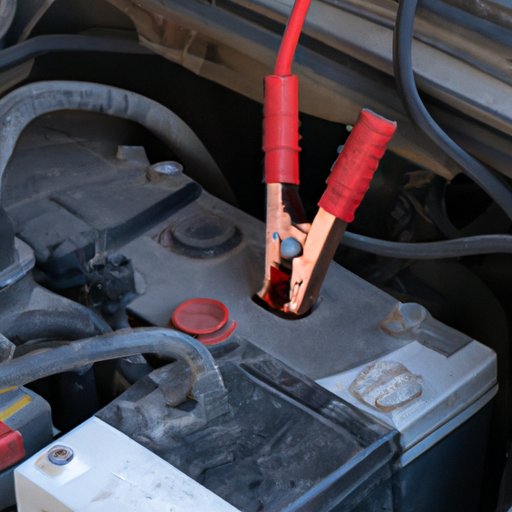
The Ins and Outs of Jumpstarting a Car: A Step-by-Step Guide
It can happen to anyone – you turn the key in the ignition, only to hear the dreaded sound of silence. A dead car battery can be a frustrating and inconvenient situation to deal with, but with a little knowledge and the right tools, jumpstarting your car can be a fairly simple process. In this article, we’ll provide you with a step-by-step guide on how to successfully and safely jumpstart a car.
Step-by-Step Guide
Before we get started, it’s important you have a few things on hand. You’ll need a set of jumper cables, a car with a charged battery (the donor car), and, of course, the car with a dead battery (the recipient car). Once you have these items, follow these simple steps:
Step 1: Identify the dead battery and locate the donor car.
The first step in jumpstarting a car is identifying the dead battery and locating the donor car. The donor car should be parked facing the recipient car so that the two batteries are as close as possible.
Step 2: Connect the jumper cables correctly.
Next, connect the jumper cables in the following order:
- Attach the positive (+) cable clamp to the positive terminal on the recipient car battery.
- Attach the other end of the positive (+) cable to the positive terminal on the donor battery.
- Then, attach the negative (-) cable clamp to the negative terminal on the donor battery.
- Finally, attach the other end of the negative (-) cable clamp to a bare metal surface on the engine block or another unpainted metal device in the recipient car
Step 3: Let the donor car run for a few minutes to charge the dead battery.
Once the cables are connected, let the donor car run for a few minutes. This charges the dead battery in the recipient car. Make sure to keep the donor car running throughout the entire process.
Step 4: Attempt to start the dead car.
After a few minutes, attempt to start the recipient car. If it starts, let it run for a few more minutes with the donor car still connected to ensure the battery is fully charged. If it doesn’t start, wait a few more minutes and try again.
Step 5: If successful, remove the jumper cables.
If the dead car starts, remove the jumper cables in the reverse order of how you connected them (negative cable from the recipient car, negative cable from the donor car, positive cable from the donor car, and finally positive cable from the recipient car).
Video Tutorial
Here is a quick video tutorial that demonstrates the above steps:
While the video covers all the essential steps, we also want to highlight some additional tips and safety precautions:
- Always make sure both cars are turned off before connecting the jumper cables.
- Make sure the cables are away from moving engine parts, such as belts and fans, before starting either car.
- Never allow the clamps to touch, or it may create sparks and cause an electrical shock or fire.
- If the recipient car still doesn’t start after several attempts, it may be best to call a professional for assistance.
Infographic
For a more visual representation of the steps involved in jumpstarting a car, take a look at this infographic:

Here are some quick tips to keep in mind:
- Always read the owner’s manual for specific instructions on your vehicle.
- Remember the acronym “Dead Battery Right, Donor Battery Right” when connecting the cables to ensure you connect the correct terminals.
- Use caution when working with the battery and wear gloves and eye protection.
Common Mistakes
There are a few common mistakes people make when jumpstarting a car. The first is reversing the polarity, or connecting the cables to the wrong terminals. This can cause damage to your car’s alternator, other electrical components, or create a fire or explosion.
Another mistake is connecting the cables to the wrong part of the battery, such as the post clamp instead of the metal part of the post itself. This can result in a poor connection and potentially damage the battery or the charging system.
To avoid these mistakes, always make sure you’re connecting the cables correctly and using caution. If you’re unsure how to jumpstart your car, seek help from a professional.
Safety Tips
Jumpstarting a car can be safe as long as you take the necessary precautions. Here are some safety tips to keep in mind:
- Always wear gloves and eye protection when working with the battery.
- Make sure the cars are parked in a safe, level location away from traffic.
- Never smoke or create sparks or open flame in the vicinity of the battery.
- If you smell sulfur or see smoke, stop the process right away as it could indicate a problem with the battery or charging system.
Conclusion
Jumpstarting a car doesn’t have to be a complicated or scary process. By following our step-by-step guide and associated safety tips, you’ll be back on the road in no time.
Remember, always prioritize safety when dealing with a dead car battery. If you’re unsure about any aspect of the process, seek help from a professional.
And if you found this article helpful, please share it with friends or family members who may benefit from this information too.




